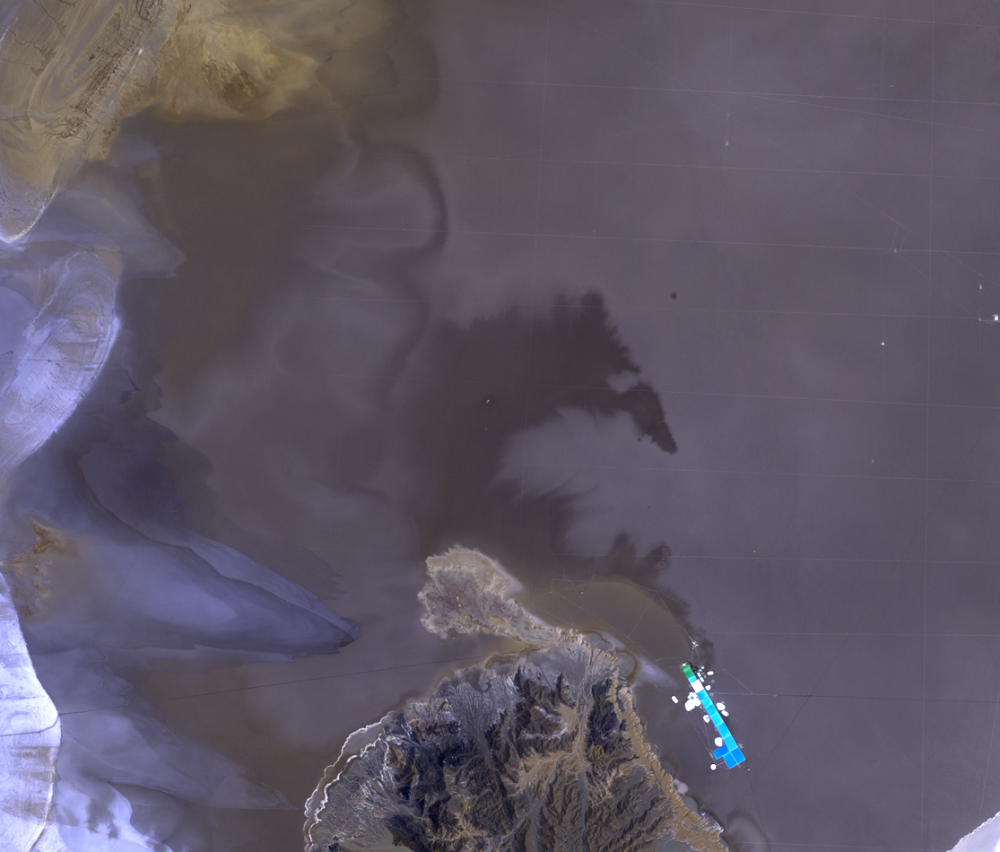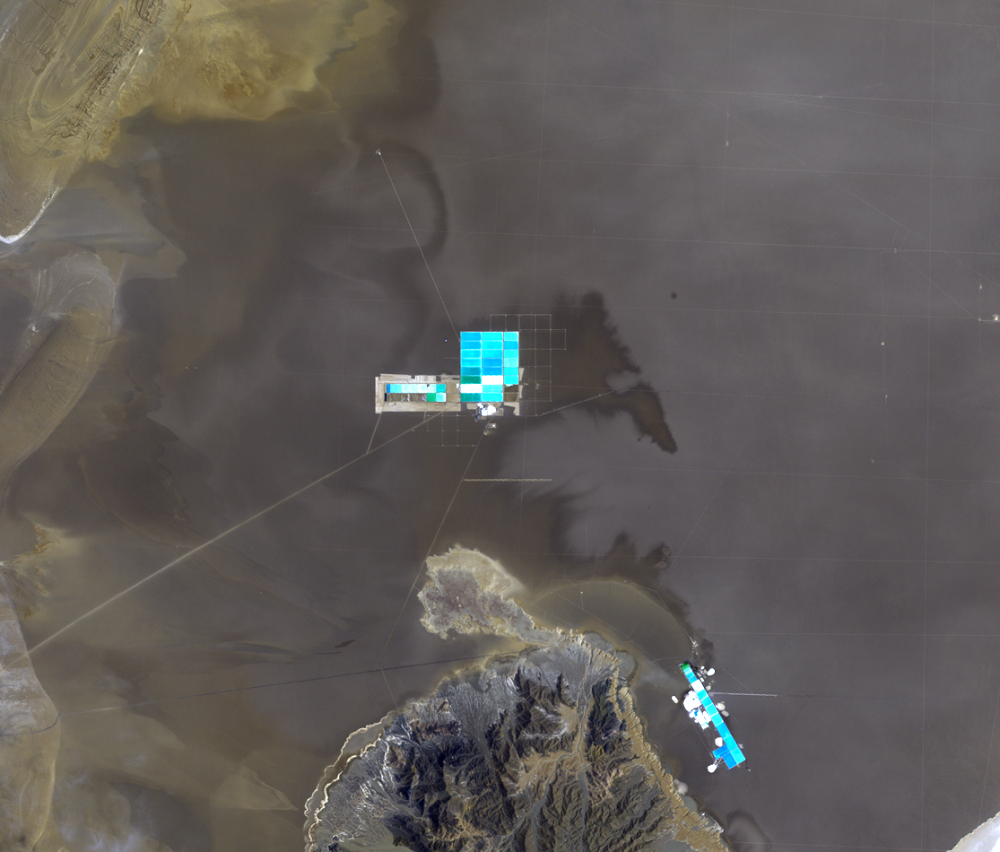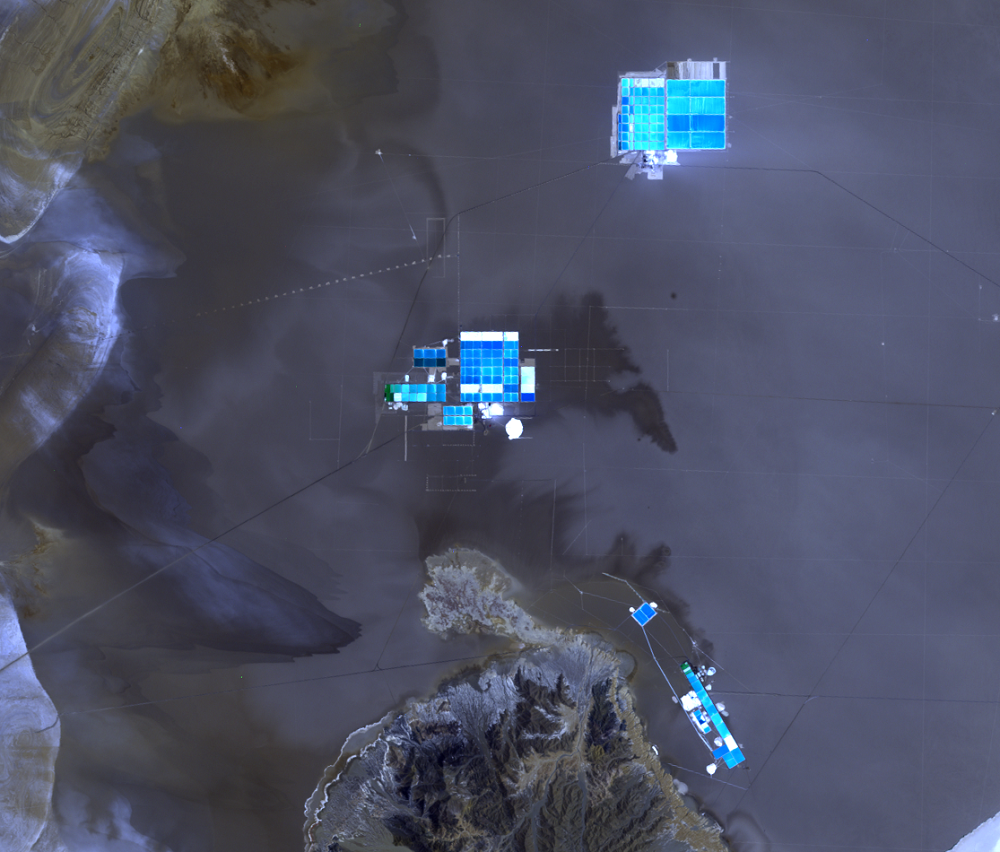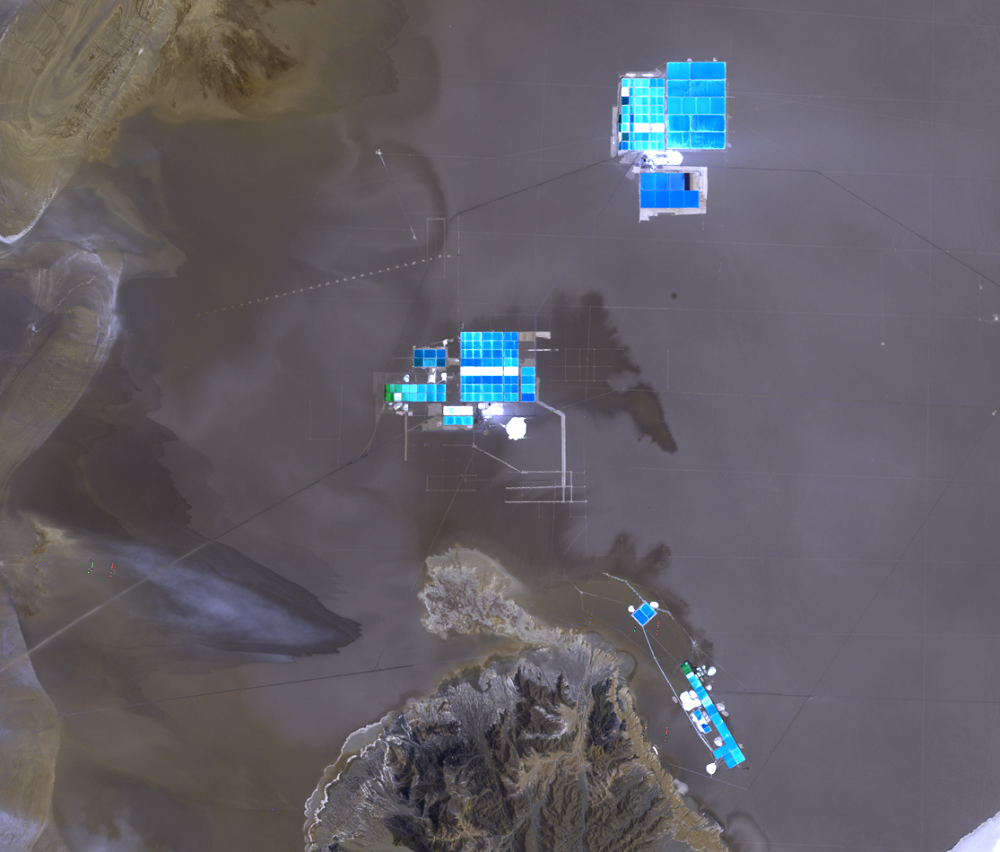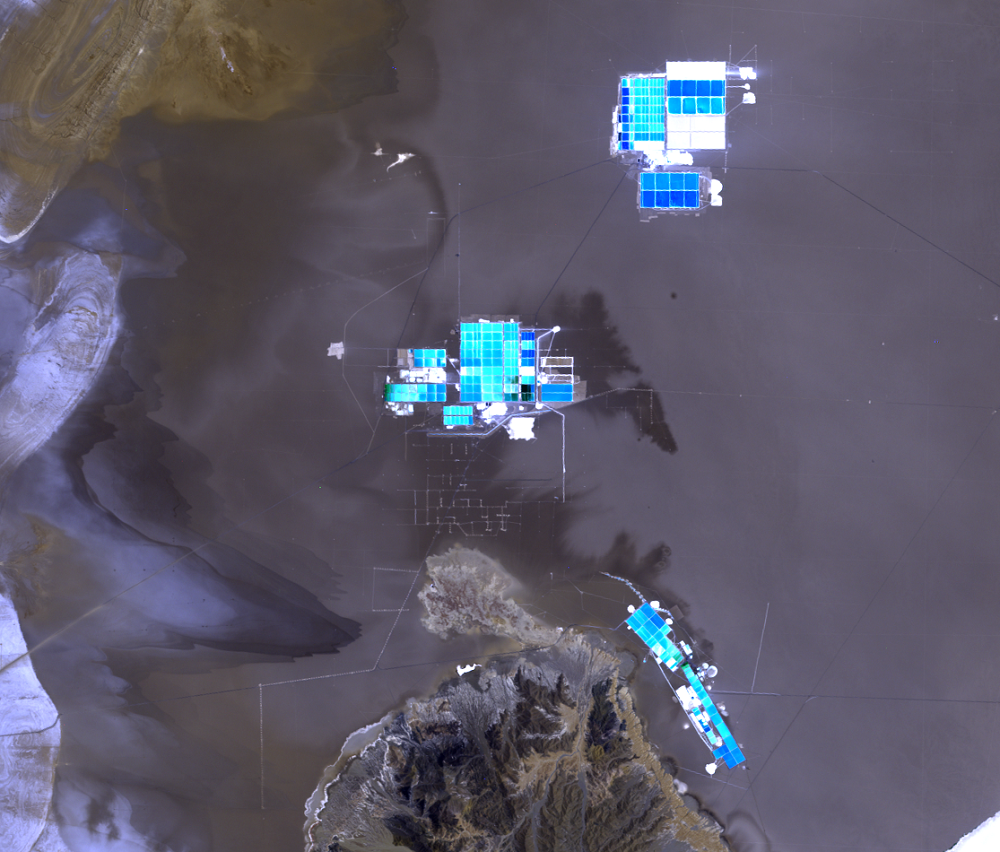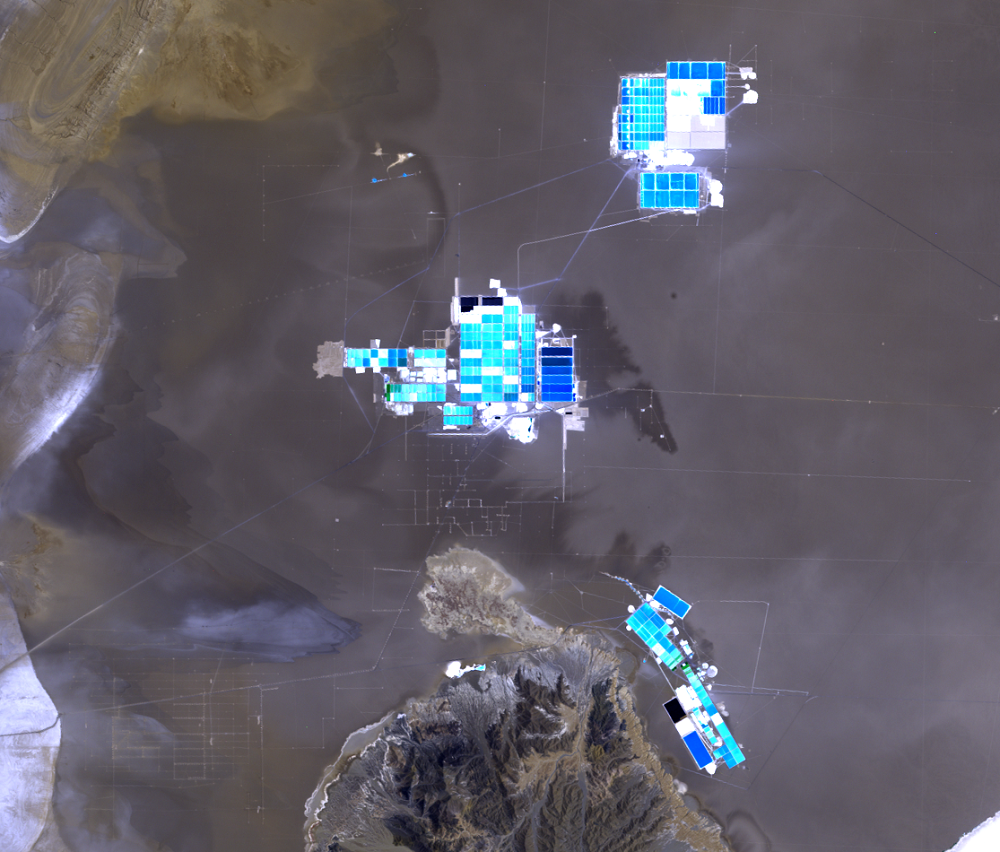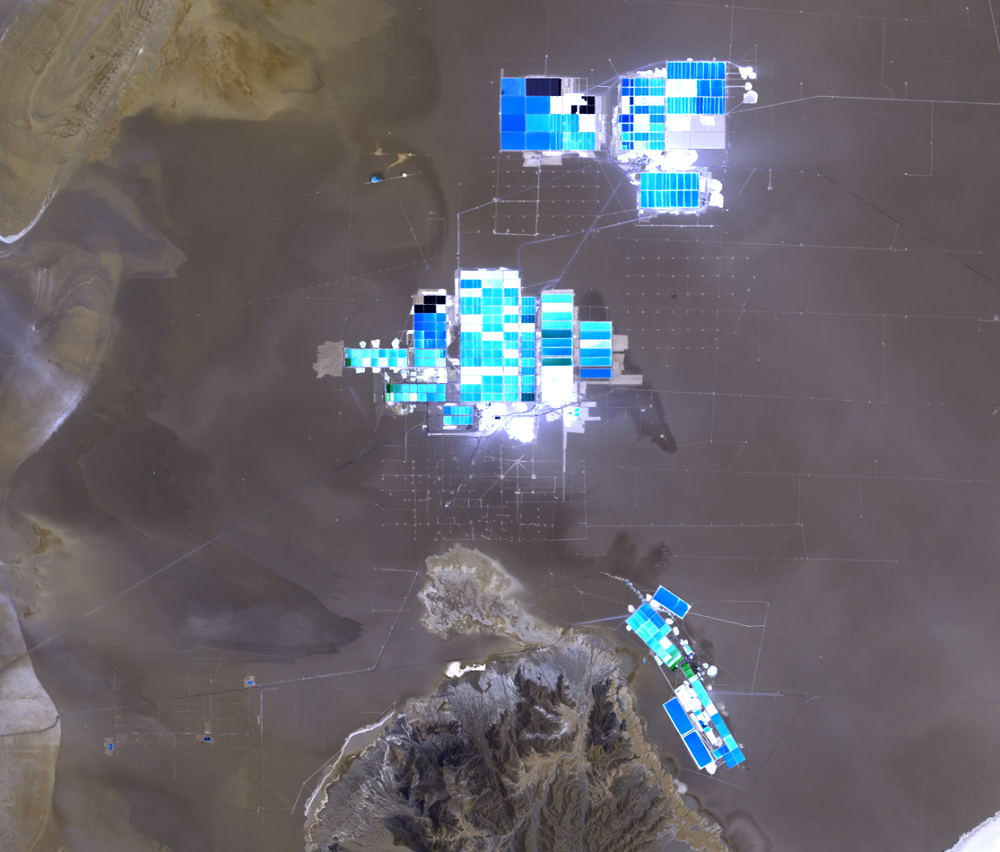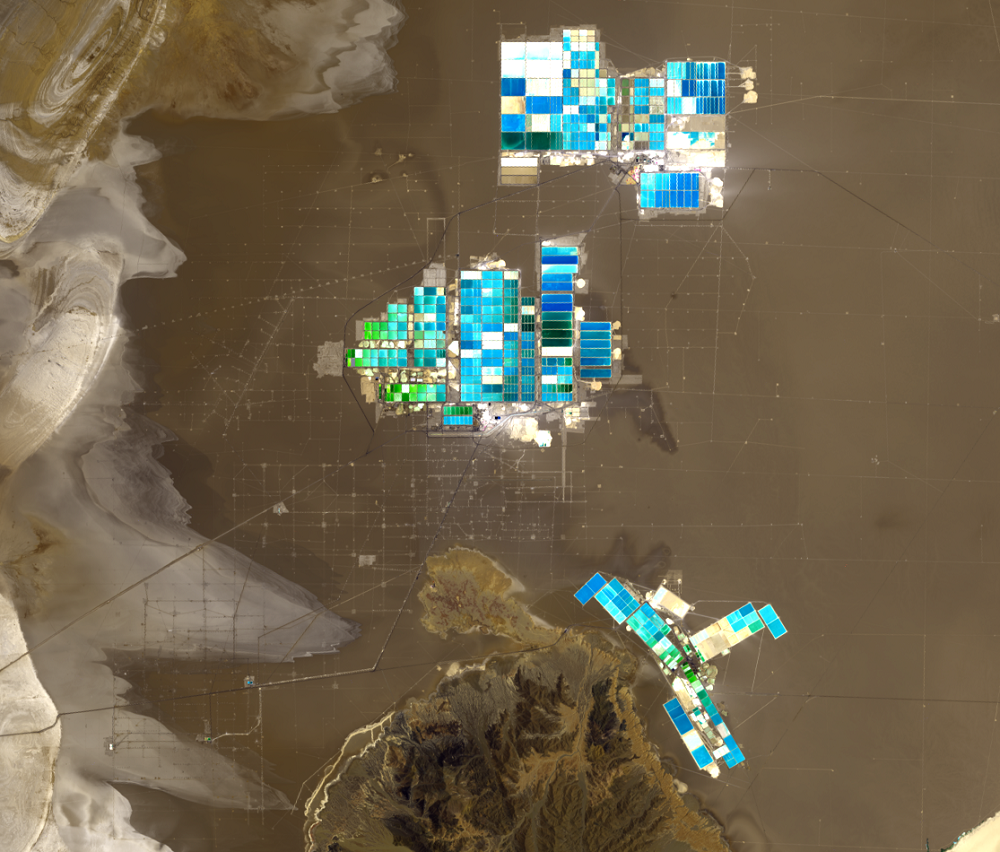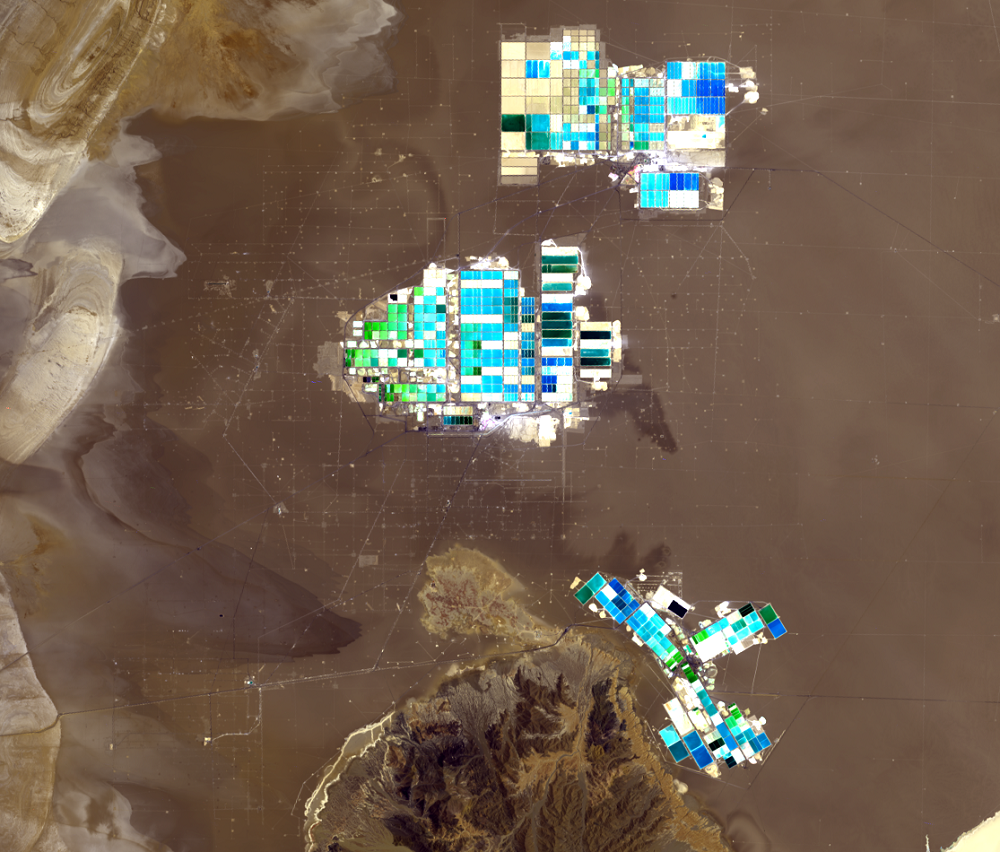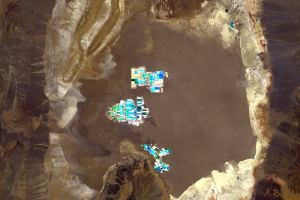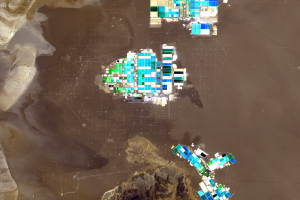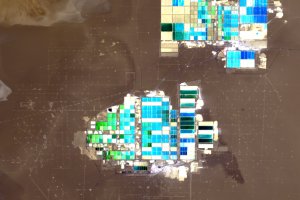
Ponds
Earth Resources Observation and Science (EROS) Center - Earthshots
Some dry lakes have occasional inundations that partially dissolve the surface crusts. The center of the Salar de Atacama, however, is continually dry, so its surface is very rough.
An increasing number of evaporation ponds now sprawl across the salt flat. Large amounts of lithium-rich brine are pumped to the surface from up to 30 meters below the saline crust. Canals bring the brine to ponds for efficient evaporation in this dry, windy place. Potassium chloride, potassium sulphate, boric acid, magnesium chloride, and lithium chloride are left behind. The lithium chloride is treated with sodium carbonate to produce lithium carbonate, the primary ingredient in lithium-ion batteries.
The lithium concentration in the Salar de Atacama is the highest in the world. That, along with the fast evaporation rate, means the region has the planet’s largest deposit of economically recoverable lithium. Salar de Atacama has an estimated lithium content of 6.3 million tons.

